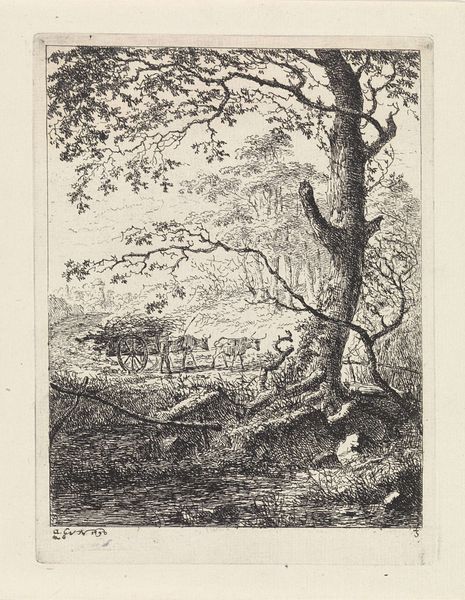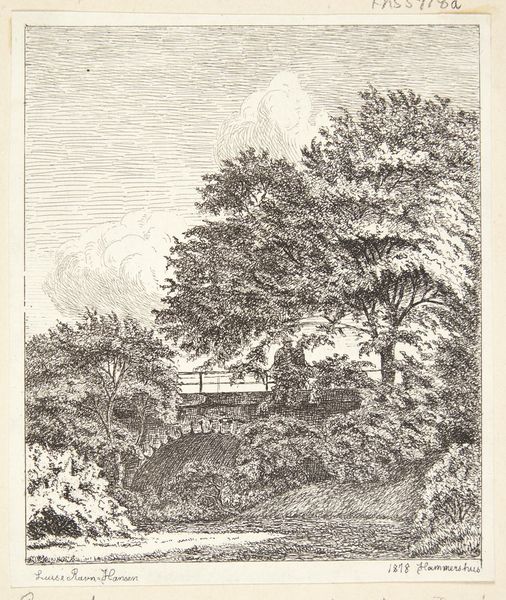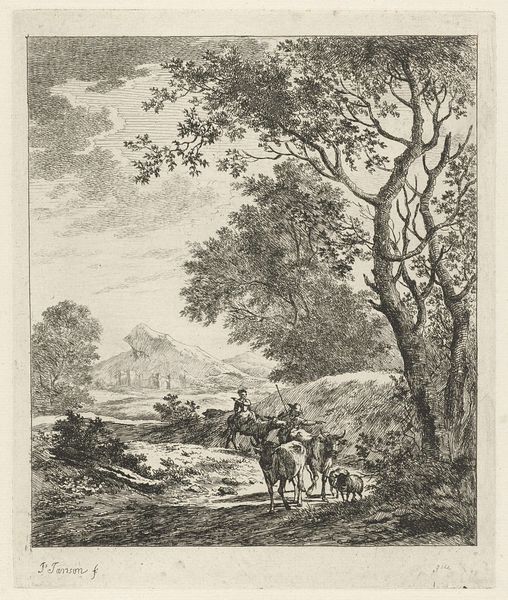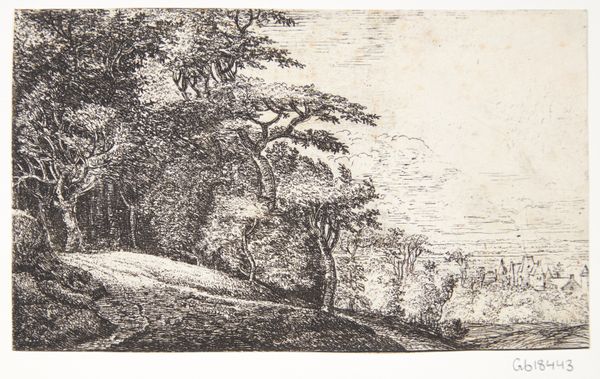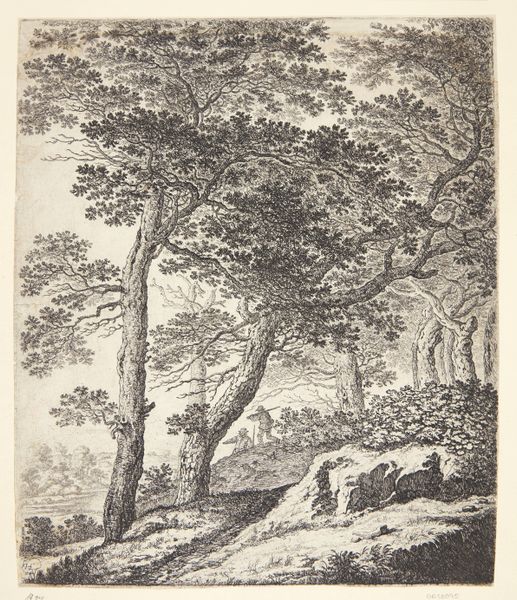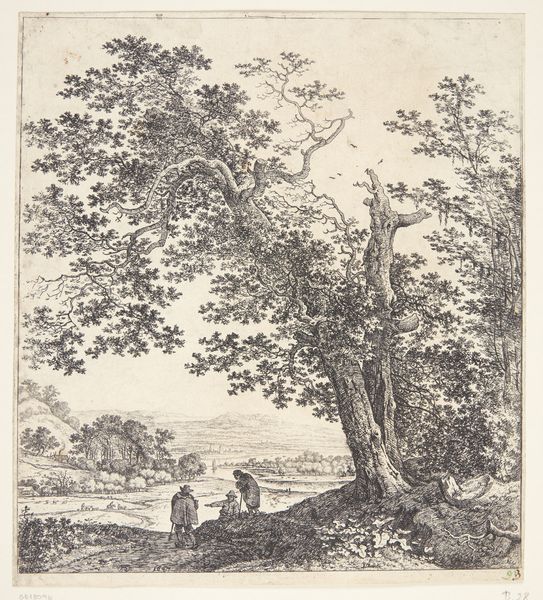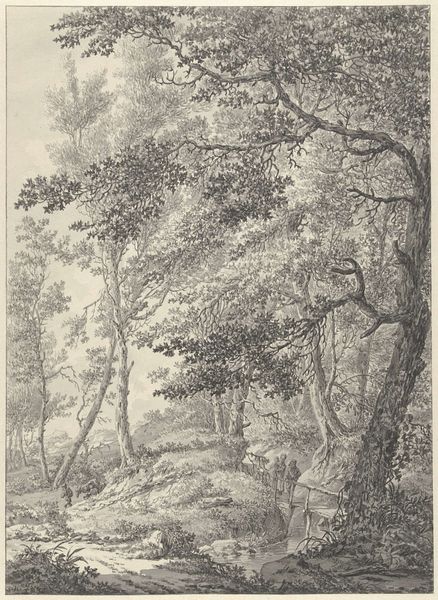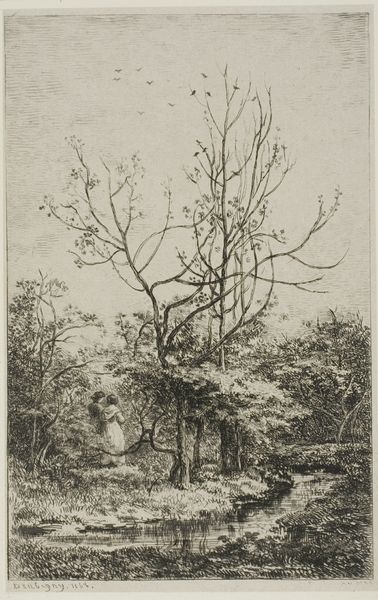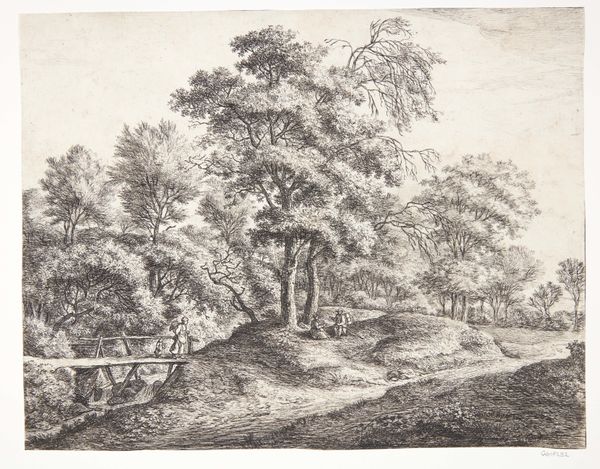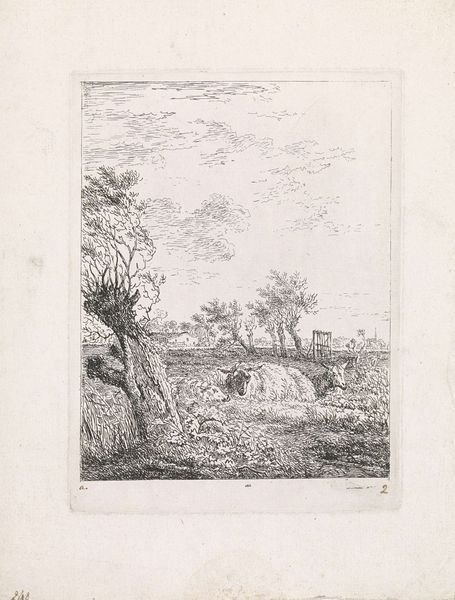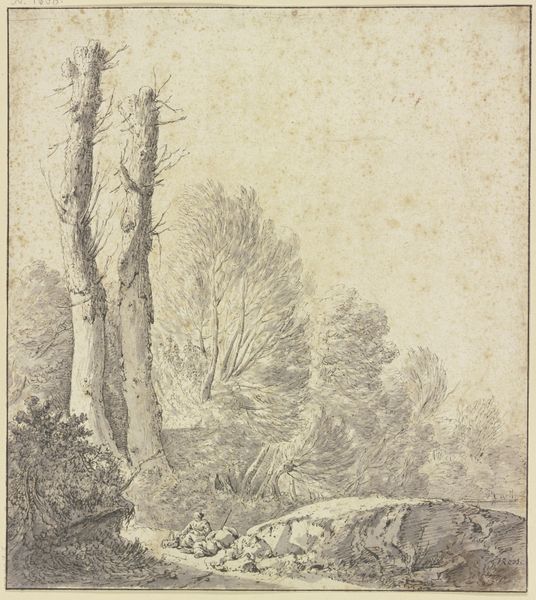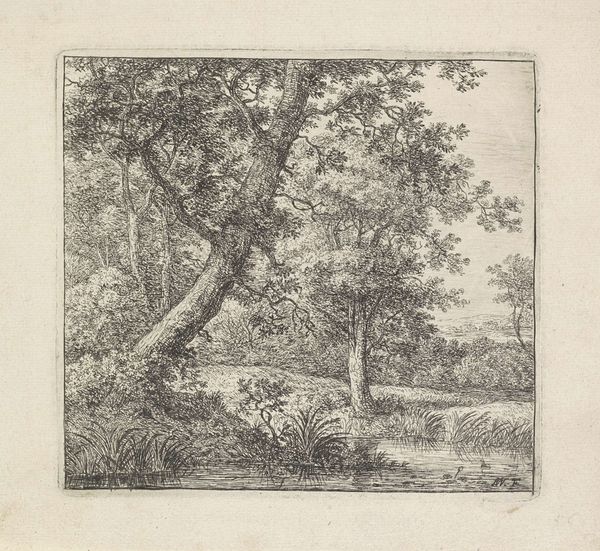
Dimensions: 137 mm (height) x 115 mm (width) (bladmaal)
Louise Ravn-Hansen made this print of a bridge near Hammershus using etching, a process steeped in tradition. Etching involves covering a metal plate with a waxy, acid-resistant ground. The artist then draws through this ground, exposing the metal. When the plate is dipped in acid, the exposed lines are bitten, creating grooves. The deeper the bite, the darker the line will appear in the print. Ink is then applied to the plate, filling these grooves, and the surface is wiped clean. Finally, the plate is pressed onto paper, transferring the ink and creating the image. The appeal of etching lies in its directness, allowing for a fluid, almost calligraphic line. Look closely, and you can see how Ravn-Hansen used this to her advantage, capturing the intricate foliage and the rough texture of the stone bridge with remarkable detail. The process is labor intensive, demanding skill and patience. Considering this, we can appreciate "Bro ved Hammershus" not just as a picturesque scene, but also as a testament to the artist's mastery of a craft.
Comments
No comments
Be the first to comment and join the conversation on the ultimate creative platform.
